Motel chairs making a comeback – by Diane Morey Sitton
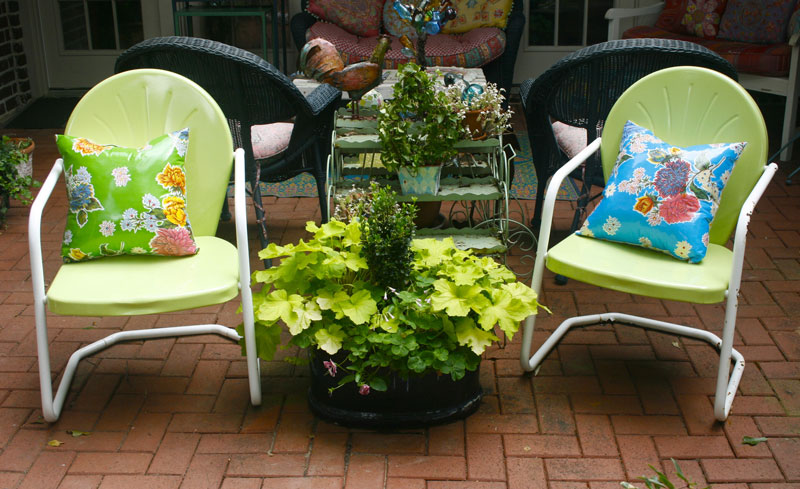
They are as American as baseball and apple pie, as comfortably familiar as well-worn garden gloves, and as enduring as an antique rose.
Luckily for gardeners and nostalgia lovers — and thanks in part to junkers and collectors – motel chairs are making a comeback.
Ranging from yellow and tangerine to turquoise and sky blue, shiny new models decorate porches, patios and poolsides. But vintage models, too, are in demand, some so old and crusty that folks proudly describe the built-up layers of chipped paint as “camo pattern.”
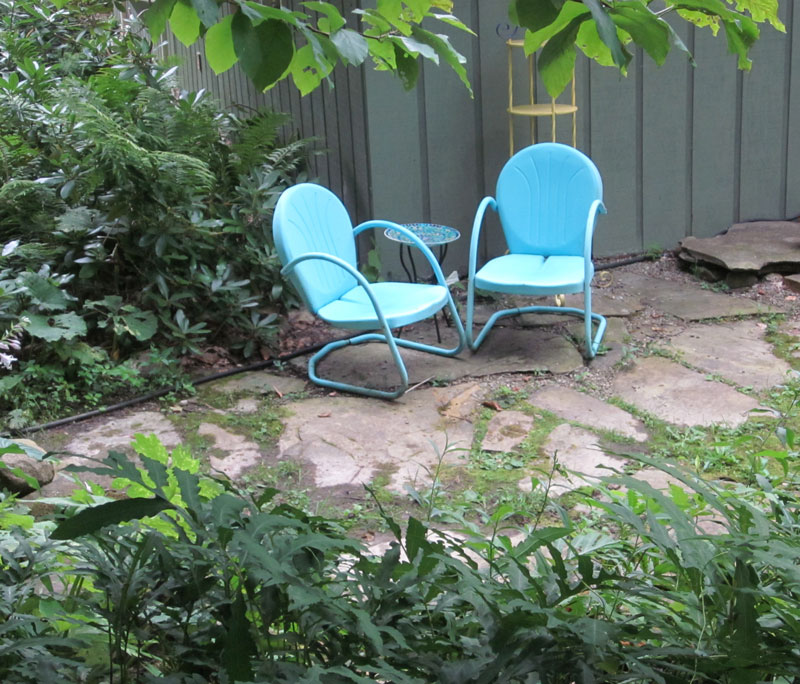
Although metal lawn chairs existed as early as the mid-1930s, the “motel chair” phenomenon didn’t take off until after WWII when Arkansas manufacturer Ed Warmack began making metal patio furniture using the same factory he had used to fabricated wartime metal goods. Post war families had new homes with backyards, the new “spring-back” tubular steel lawn chairs were comfortable, and families liked the bright modern colors. What’s more, the art-deco inspired, mass-produced chairs were lightweight compared to cast-iron alternatives, and they were affordable.
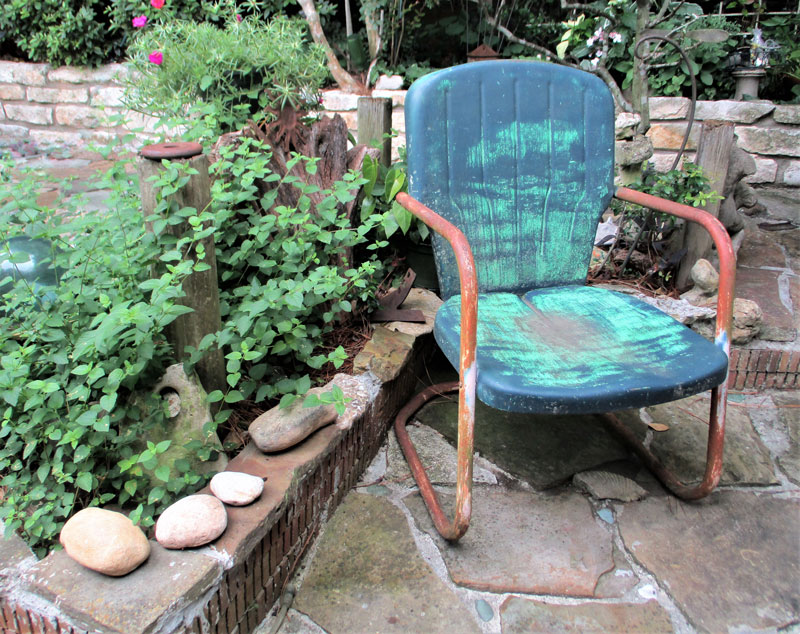
By the 1950s, Ed Warmack’s company had grown into a lawn-furniture-producing behemoth – the largest such manufacturer in the U.S. — and his ever-popular chair had become a common fixture in front of nearly every motel and tourist court in the country, hence the name “motel chair.”

Flander Industries purchased the company in 1954. They continued stamping out metal lawn furniture for another 40 years or so, but, eventually, plastic replaced steel (it was cheaper and weighed less), and new generations of home owners preferred the cushy comfort of upholstered patio furniture instead of the cold, hard metal of their granddad’s era.
But for fans of the iconic American lawn chair, all was not lost. In 2002, Louis and Kathy Torrans (Torrans Manufacturing Co.) reintroduced the original line of stamped metal lawn furniture, tweaking the mid-century models into heavier, sturdier and more substantial furniture than before. Their updated color palette included lime, white, orange, red, aqua, coral, yellow, and seafoam, among other hues.
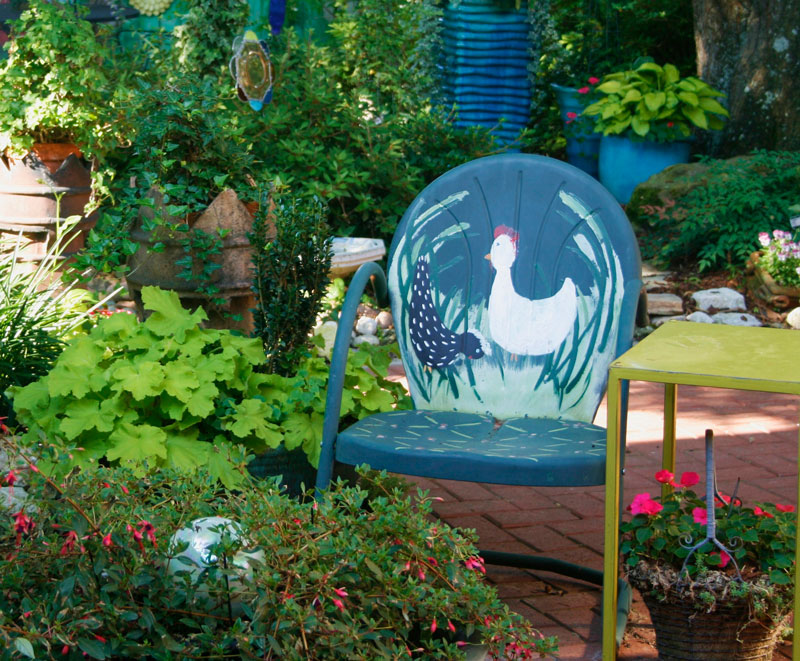
Not surprisingly, motel chairs’ upbeat color palette is only slightly larger than its roster of names. Officially, motel chairs were called “cantilever” chairs because of their flexible tube frame. In the late 1930s, they acquired the names “shellbacks” and “clamshells” because the backs of the chairs resembled the shape of a clam. By the late 1940s, chair backs mimicking the contour of an opened tulip replaced the clamshell profile, hence the name “tulip chair.” Folks have even referred to motel chairs as “bouncers” due to their spring-back design.
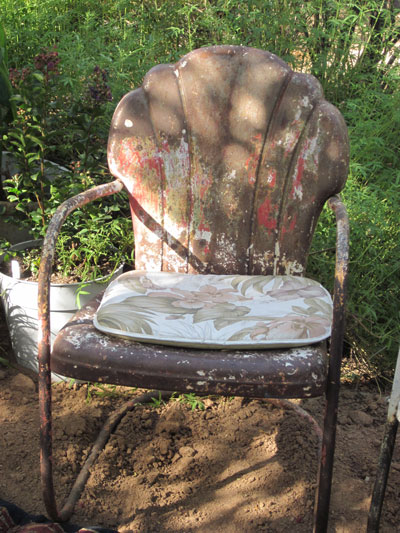
By whatever name you call them, motel chairs have made a comeback. So, come, sit a spell. Let’s reminisce about yesteryear and make plans for our tomorrows.
